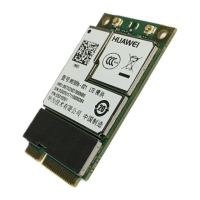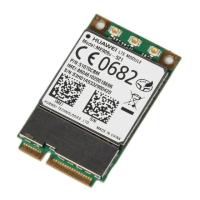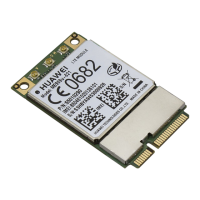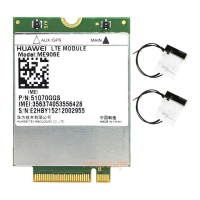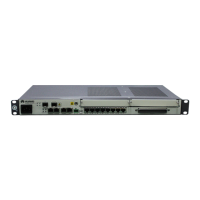HUAWEI ME909s Series LTE Mini PCIe Module
Hardware Guide
Huawei Proprietary and Confidential
Copyright © Huawei Technologies Co., Ltd.
B40 TX/RX WIFI TX/RX B38 TX/RX
B41 TX/RX
2300MHz
2400MHz
2401MHz 2495MHz 2570MHz 2620MHz
2500MHz
2496MHz 2690MHz
B7 uplink
B7 downlink
The two systems interfere with each other because of nonl inear characteristic of LTE
Band 38/40/41 and Wi-Fi transmitter. The main impacts are as follows:
1. LTE Band transmitter spurious in Wi-Fi Band impacts on the sensitivity of Wi-Fi
receiver.
2. LTE Band output power can block Wi-Fi receiver.
3. Wi-Fi transmitter spurious in LTE Band impacts on the sensitivity of LTE Bands.
4. Wi-Fi output power can block LTE Band receiver.
According to the theoretical analysis, in order to achieve the co-existence between
Wi-Fi and LTE, the rejection between Wi-Fi and LTE Band 41 or Band 40 needs to be
over 60 dB. (The analysis is based on the Wi-Fi chip Broadcom BCM432XX, the
co-existence design depends on the customer’s Wi-Fi chipset specification.)
In fact, the current devices cannot meet this requirement, so we need to increase the isolation
between antennas and disable some channels.
4.6.2 Suggestions about the Interference
These risks have been taken into consideration in the design of the ME909s Mini PCIe
module. The system design also should be paid attention:
1. It is recommended that the system should be added Wi-Fi SAW filter to
guarantee good attenuation in the LTE transmit Band (including Band 38, Band
40, Band 41), otherwise, LTE Band output power will block Wi-Fi receiver.
2. The good isolation between LTE antenna and Wi-Fi antenna is more than 25 dB.
3. Two ways above can help to make the isolation to be 60 dB. If they are still not
enough, some channels may need to be disabled.

